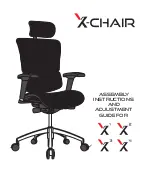
6
1.3
Safety instructions
The intended use/operation of all moving parts is as important for the safety of the person
in need of care as well as for the relatives and the caregivers/nursing staff to avoid poten-
tially dangerous situations. This requires the correct installation and operation of the com-
fort/nursing care bed. The individual physique of the person in need of care as well as type
and the extent of their disability must be taken into account by all means when operating
the comfort/nursing care bed.
Avoid dangers, accidental motor adjustments and incorrect operation by using the disa-
bling function. When the operator, e.g. the nursing staff/caregivers or the care providing
relative leaves the room, the entire operating functions of the comfort/nursing care bed
should be disabled via the key on the hand control. This is achieved by operating the key
of the hand control. First, lower the lying surface to the lowest position and activate the
lock function with a twist of the key, located in the key lock on the backside. Remove the
key and check the function of the hand control for safety reasons. Make sure that it is
indeed locked.
These recommendations apply particularly:
–
if the person in need of care cannot operate the hand control safely due to
certain disabilities;
–
if the person in need of care or the caregivers could be at risk due to those
accidental adjustments;
–
if the side rails are in a raised position and there could be danger of trapping
and crushing,
–
if children are unsupervised in the room with the comfort/nursing care bed.
Always make sure that the hand control (when not in use) is securely hooked in the sup-
port hook at the comfort/nursing care bed and cannot drop.
As a general rule, the comfort/nursing care bed should be operated by instructed nursing
staff/caregivers, relatives or in attendance of instructed persons.
When adjusting the lying surface, it is particularly important to ensure that no limbs are
placed within the adjustment range of the side rails. If the side rails are adjusted, pay
attention to the correct lying position of the person in need of care.
Prior to making any electrical adjustment, it should, as a general rule, be made sure that
no limbs are positioned in the adjustment range between the chassis and the head or foot
part, especially that there are no persons or animals in the area between the floor and the
raised lying surface. In case of a double bed, it must also be ensured that there are no
limbs between the two lying surfaces. Danger of being crushed is particularly high in these







































